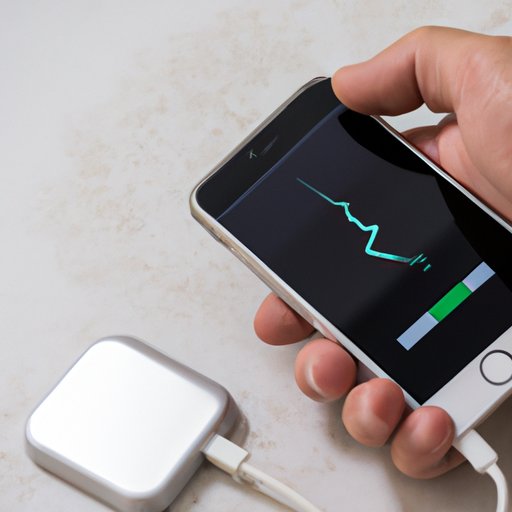Introduction
It’s frustrating when your phone won’t charge. You want to be able to use your device without worrying about running out of power. Fortunately, there are ways to troubleshoot and fix this problem. This article will help you understand why your phone isn’t charging and how to resolve it.
Troubleshoot Your Phone’s Charging Problem
The first step in troubleshooting your phone’s charging problem is to check if the charger is working properly. Make sure the charger is securely plugged into the wall socket and that the cable is firmly attached to both the wall socket and your device. If possible, try another charger to see if it works.
If the problem persists, then make sure that your phone is connected properly. Check the charging port on your device for any debris or dust that may be blocking the connection. Use a soft cloth to clean the port, and then try plugging in the charger again.
What Could Be Causing Your Phone Not to Charge?
There are several potential causes of a phone not charging. The most common culprits include a faulty charger, a damaged charging port, corrupted software, or a battery drain or aging battery.
How to Fix a Phone That Won’t Charge
If your phone still won’t charge, then the next step is to inspect the charging port and check for damage. If the port looks fine, then try performing a hard reset on your device. This can help clear out any corrupted files that may be causing the issue.
If a hard reset doesn’t work, then you may need to replace either the battery or the charger. It’s important to use original chargers as generic ones may not provide enough power for your device.
The Causes of a Non-Charging Phone Battery
Aside from faulty hardware, there are other factors that can cause your phone battery to stop charging. These include overheating, overcharging, and deep discharge. Overheating can occur when the phone is exposed to high temperatures, while overcharging can damage the battery if you leave it plugged in for too long. Deep discharge can occur when the battery has been drained completely and needs to be recharged.

Tips for Resolving Power Issues on Your Smartphone
To avoid these charging problems, it’s important to take proper care of your device. Here are some tips to help you get the most out of your phone’s battery life:
- Use only original chargers and cables.
- Keep your device away from heat sources such as direct sunlight or hot air vents.
- Avoid overcharging by unplugging your phone once it’s fully charged.
- Monitor your battery usage and limit the amount of time you spend using apps that consume a lot of power.
Understanding the Basics of Phone Charging
It’s also helpful to understand the basics of phone charging. There are different types of chargers, including USB, Lightning, and wireless chargers, and each type has its own charging levels. Most phones come with a charger that has a 1A (ampere) output, but some devices require higher outputs such as 2A or 3A. Additionally, the amount of time required to charge your device depends on the battery size and the type of charger used.
Common Reasons Why Your Phone Isn’t Charging
In summary, the most common reasons why your phone isn’t charging include a faulty charger, a damaged charging port, corrupted software, a battery drain or aging battery, overheating, overcharging, and deep discharge. To prevent these issues, it’s important to take proper care of your device and use only original chargers.
Conclusion
If your phone isn’t charging, don’t panic. There are several steps you can take to troubleshoot and resolve the issue. This article has provided a comprehensive guide to help you understand why your phone isn’t charging and how to fix it. Remember to take proper care of your device to avoid future power issues.


